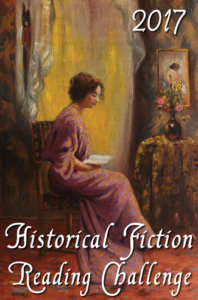
An American historian named Trevor Stratton is given a box of artifacts belonging to a woman named Louise Brunet, who lived at 13 Rue Thérèse in Paris with her husband Henri after World War I. He discovers through piecing together her story that she lost a cousin with whom she was in love and whom she wanted to marry in World War I. She married a man who worked in her father’s shop, and she was desperate for a child. She embarks on a flirtation with a new neighbor, a teacher, who surprises Louise by taking her up on her suggestions. Meanwhile, Trevor can’t explain why he knows things about Louise’s life that don’t appear in the artifacts. How can he know, for example, so intimately how Louise feels and what she does as she goes about her life in Paris in November 1928?
This book is based on an interesting idea. Shapiro apparently has a box of relics belonging to a real-life Louise Brunet who died alone. The landlord of 13 Rue Thérèse allowed the residents to claim her belongings, and Shapiro’s mother selected this box. From the artifacts in the box, Shapiro constructed this story. I’m not sure how I feel about her taking that kind of license with a real person’s life, especially when so much of the story is speculation and doesn’t necessarily cast Louise in a positive light. She is a likable character, but I wonder what her descendants, had she had any, would have thought about her fictional treatment. There is a time-travel element that is not quite gracefully handled as well. One wonders about the necessity of including Trevor Stratton at all. His story seems somewhat superfluous, perhaps because it isn’t woven into Louise’s story as seamlessly as it might be. I love a good time travel story, but I wonder if this book might not have been better as strictly historical fiction. In addition, I would have liked to have seen the plot hang together a bit more tightly.
Despite some flaws, I didn’t give up on it, and it was a very quick read, if not a gripping one. I think in the case of this particular book, I am probably just not the right audience because many reviewers seem to have liked it more than I did. The QR codes in the back of the book are a nice touch; they allow the reader to see higher resolution photos of the artifacts. I found the color images in the book sufficient. The book is a beautiful book, as well, with a gorgeous cover and thick creamy pages and a pleasant font. It isn’t quite like any other book I’ve read before. You might enjoy it if you like quirky French films.
Rating:




I’m counting this book for several reading challenges. It’s Paris setting makes it my French book for the European Reading Challenge. I’ve had it on my backlist at least since September when I bought it, so I’m also counting it for the Beat the Backlist Reading Challenge. Finally, it is set mainly in 1928, so I’m also counting it for the Historical Fiction Reading Challenge.


